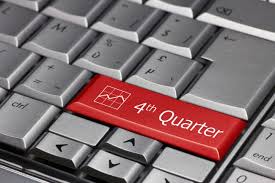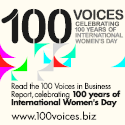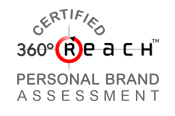 Events can be fun and uplifting -or- they can be dull and a drag. This week I am attending a multi-day national conference. To fully enjoy the event and achieve great ROI I need to do some planning and identify ways to keep my energy high.
Events can be fun and uplifting -or- they can be dull and a drag. This week I am attending a multi-day national conference. To fully enjoy the event and achieve great ROI I need to do some planning and identify ways to keep my energy high.
A special thanks to Kelly Schaefer for inspiring me to look at tasks differently and to Cena Block for tips on organizing stuff and for making me laugh!
Below are the 10 tips I use to insure I have fun, connect and reconnect. Each fine tuned via an event connection that has impacted my results and blessed my life.
1. Organize yourself
Pack your name tag, business cards and a specific note pad or portfolio that you only use for conferences, workshops, or seminars. Be sure to have plenty of business cards on hand.
2. Wear comfortable shoes and clothes
Care for your physical needs and be comfortable. Coordinating with the weather is key for long events.
3. Connect with someone within the first 15 minutes
Smile and say, “Hi!” A friendly exchange sets the tone for the rest of the event. Connect early and introduce those you meet to others.
4. Set a tone of trust and anticipation
For example, I might set the following intention: “What happens today at [name of event] will allow me to meet new contacts and learn what I need for my continued success.”
5. Connect with the theme of the event
If the event has a theme, connect your story or goals with the event when appropriate. For example, if the event theme is “Stepping Forward” determine how you will connect with that forward movement. The story or goals you create will help you retain both the information you learned and the names of the connections you forged at the event.
6. Have a easy method to capture information and data
Writing down what you hear will help you retain key facts. Note action items you want to act on as a result of the event.
7. Step away for fresh air and breaks
Drinking water and taking breaks lift you up. Hydration helps you think clearly and look good. Scope out restrooms off the beaten path and you will have a few extra steps of exercise and less standing in line at the conference.
8. Before you arrive, write down at least 2 things you want to learn from the event
This helps you focus on what you are really hoping to take away from the event. I also have a third item — an intention of “something better than I expected.” This intention helps me be open to new content and people that I may never have imagined being present.
9. Know your limits and take a break as needed
All events have a schedule, but it may not be the best schedule for you. Event planners usually set up schedules that fit the masses. If you find you need a break, take it. Doing so allows you to be alert and able to get what you need and want from the event. Some of the best connections made at conferences have been outside the conference center standing in the sunshine during a “me break.”
10. Listen, contribute and interact
The presenters will no doubt be knowledgeable, however some of the best takeaways come for those seated in the audience. Share your thoughts, questions and unique point of view, as well. What you have to offer may be exactly what someone needs in that moment.
Then, within 5 days of the event, take action on at least one item you wrote down and share at least two new things you learned with someone else. Doing so helps you create ROI on the time and energy you invested at the event.
Do you have a strategy to create event and career success?
What would be different in your life in a year if you did?
Who will you connect with that will impact your results?
Let me know in the comments below.
accelerate your search, build a network, Networking
 The fourth quarter is upon us. And, in just 92 days the new year begins. Are you ready for a successful final quarter of the year?
The fourth quarter is upon us. And, in just 92 days the new year begins. Are you ready for a successful final quarter of the year?
 Humans are visual creatures. Sight, photos and the environment all around us shape our view of the world.Photos and images are shared more often on social media than posts with text alone. Why? I believe it is because, as humans, we are hard-wired for connection — to live and work in community. Images, or visual communication, helps in fostering connections and building relationships. Sharing visual images with the world helps us understand each other -and- helps you show your value — how you serve and help others.
Humans are visual creatures. Sight, photos and the environment all around us shape our view of the world.Photos and images are shared more often on social media than posts with text alone. Why? I believe it is because, as humans, we are hard-wired for connection — to live and work in community. Images, or visual communication, helps in fostering connections and building relationships. Sharing visual images with the world helps us understand each other -and- helps you show your value — how you serve and help others.
 Every thought drives your results . . . so, why not harness the power of your thoughts?
Every thought drives your results . . . so, why not harness the power of your thoughts?



 Is your resume stale and lifeless? Or is it full of energy and relevant data about you and what you do?
Is your resume stale and lifeless? Or is it full of energy and relevant data about you and what you do? Events can be fun and uplifting -or- they can be dull and a drag. This week I am attending a multi-day national conference. To fully enjoy the event and achieve great ROI I need to do some planning and identify ways to keep my energy high.
Events can be fun and uplifting -or- they can be dull and a drag. This week I am attending a multi-day national conference. To fully enjoy the event and achieve great ROI I need to do some planning and identify ways to keep my energy high.

